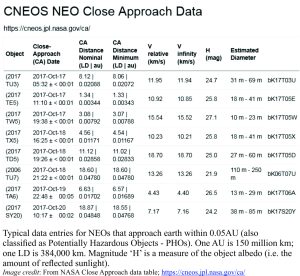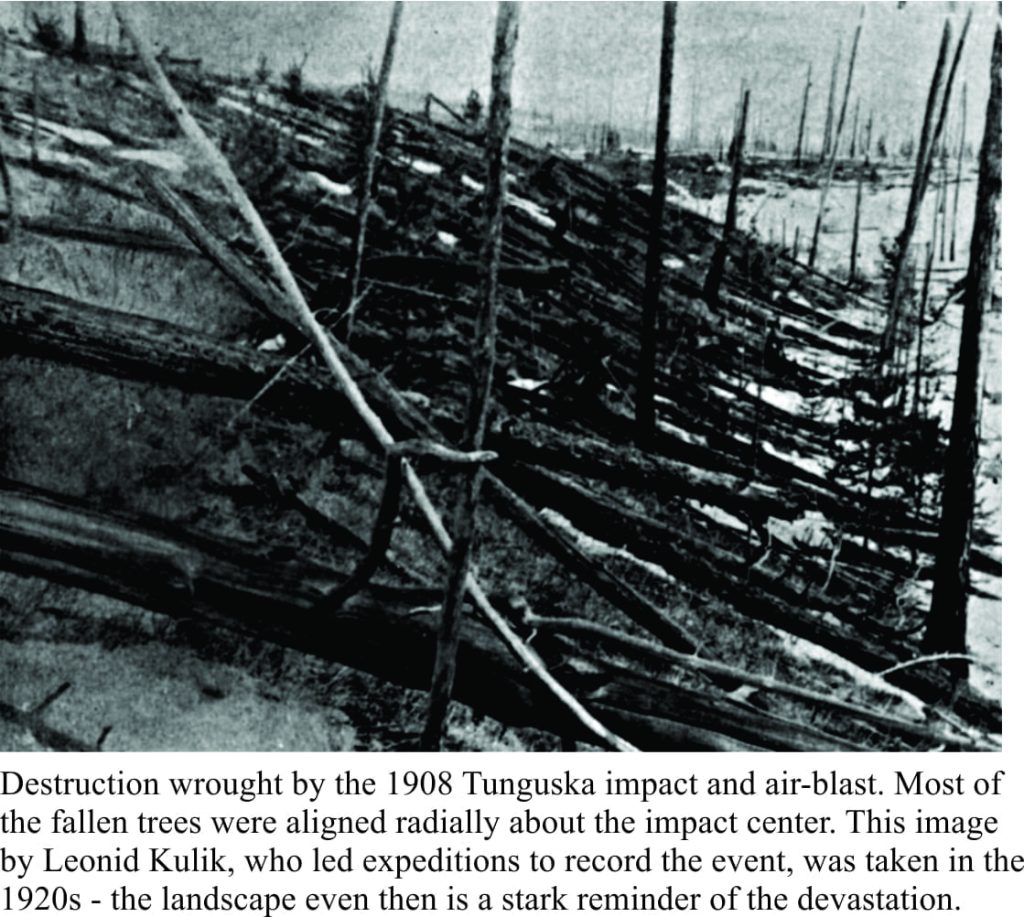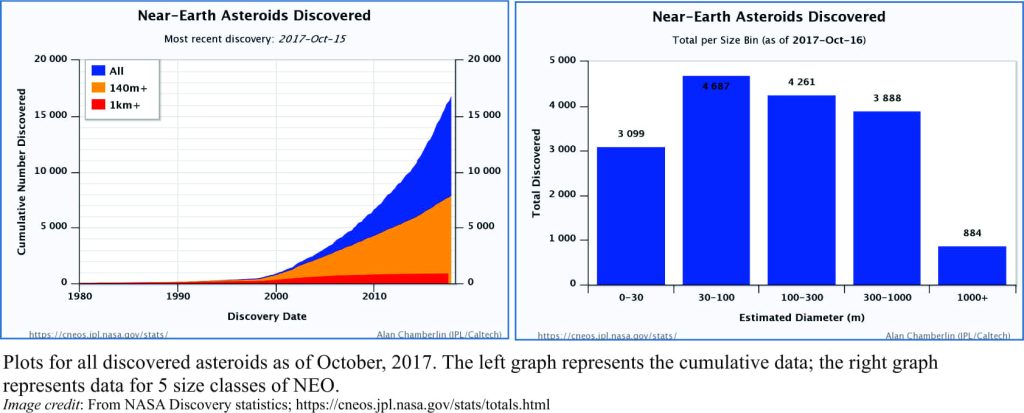The media love natural disasters, even those that don’t exist. Last week (early October, 2017), dramatic footage of a (simulated) super-volcano eruption beneath Auckland city was aired by several international media outlets, with headlines announcing the city’s calamitous destruction. But there is no super-volcano beneath Auckland. The excitement was short-lived. While Auckland smouldered (as if that wasn’t enough), it was announced that New Zealand’s North Island could experience a subduction zone earthquake that, in its aftermath, would leave 1000s dead. An interesting backdrop to New Zealand’s recent election. Having scared the local population to death, our purveyors of science moved on to the next concern; other “what ifs…”.
Asteroid impacts are no longer de rigueur; perhaps it’s the turn of super-volcanoes’, or because NASA and the European Space Agency (ESA) have stated, with some confidence, that no large impacts are expected within the next 100 years. And whereas the media may find this conclusion boring, for most of us it is a comforting thought. However (there’s always a ‘however’), this degree of confidence is based on probability, that in turn is based on the rapidly expanding database on Near Earth Objects (NEOs); space flotsam and jetsam having orbits that approach Earth to within 1.3AU units. One AU – astronomical unit, is the average distance of earth from the sun, or about 150 million km (one Lunar Distance, or LD, is 384,000 km).
The NEO database is coordinated by NASA at their Centre for Near Earth Object Studies (CNEOS), and includes other organisations such as the ESA, and even individual backyard astronomers. As of 2016, 15,000 NEOs had been discovered, mostly by ground-based optical telescopes (in Arizona, Australia and Hawaii). The NEOs are a mix of asteroids (rocky) and (icey) comet debris.
NEOs are classified according to their orbit and size; the graph below shows cumulative discoveries since 1980 for three categories – all known NEOs, NEOs greater than 140m in diameter, and those greater than 1000m. About half of those discovered are larger than 140m! Asteroids generally need to be larger than 30-50m in diameter to survive entry into our atmosphere. Those that do survive may explode, sending smaller meteorite fragments to the surface; one spectacular example was the 2013 Chelyabinsk meteor (Russia).
Near Earth Objects with orbits that bring them to within 0.05AU to earth, and are large enough to survive entry, are classified as Potentially Hazardous Objects (and yes, its acronym is PHO). The Planetary Defense Coordination Office (PDCO – NASA) is responsible for early detection and tracking of such objects.

Updating the NEO database is also necessary because an asteroid or comet orbit can be perturbed by the gravitational influence of the planets and moons, and by deep-space collisions. Solar radiation is also responsible for perturbing an object’s orbit. Asteroids tend to tumble or rotate along their orbit, such that the side facing the sun heats up, and the side opposite cools. The heat gain and loss can act as a force that moves the object slightly; this is called the Yarkovsky Effect, named after the Russian engineer Ivan Yarkovsky who, in 1900, hypothesised the effect of thermal emissions from objects like asteroids. Perturbations like these are very small, but they are important because slight changes in orbit can produce significant differences in the closeness of approach to earth.
Asteroid 101955 Bennu, a relic of our early solar system, has peaked astronomers’ interest, in part because it appears to be quite porous and carbonaceous, and because late in the 22nd century there is a 1 in 2700 chance it will impact earth (the probability will change as we approach the year of closest approach); it has been measured at 492m diameter, and hence would probably cause significant damage. The Yarkovsky effect appears to be forcing minor changes to Bennu’s orbit, and astronomers would like to develop a better understanding of this with respect to its potential closeness to earth. The OSIRIS-Rex satellite, launched in 2016, is targeted to reach Bennu in 2018, where it will take measurements and samples that will be returned to earth in 2023.
The first successful test of the asteroid tracking network and prediction of a meteorite impact involved a small object discovered in 2008, 19 hours before impact, at 1.3 Lunar Distances from earth (512,000km). The impact site was predicted to be at a location in the Nubian Desert (north east Sudan); impressively, the impact was observed to within a few seconds of the predicted time. A more recent test of the Asteroid Tracking Network and early warning system took place on October 12 (2017) when a small (15-30m) stony NEO (2012 TC4 – discovered in 2012) skimmed past earth at 42,000 km; about 1 tenth of a lunar distance. The approach was pretty close to the orbiting distance of some geosynchronous satellites.
The largest impact in recent history on June 30, 1908, the Tunguska event in Siberia, devastated 100s of square kilometres of forest. The object was probably 50-100m in diameter and exploded in the air (hence no crater). Quite apart from its scientific value, the NEO program also wrestles with the possibility of deflecting incoming NEOs like Tunguska and 101955 Bennu. NASA’s Planetary Defense Coordination Office has released an interesting Deflection App that considers hypothetical PHOs. PHO deflection is theoretically caused by a (euphemistic) Kinetic Impactor – i.e. crashing a vehicle onto the asteroid. The App analyses technically vital questions such as:
- What are the best times to deflect the asteroid?
- How much velocity change is required to make the asteroid miss the Earth?
- When could an impactor spacecraft be launched in order to intercept the asteroid?
- What is the maximum size of asteroid that can be deflected with a single launch?
- In which direction will the asteroid be deflected most easily?
While the App might provide an interesting diversion from the usual video games, it does have deadly serious intentions. Could the impactor create sufficient deflection? Would the deflection exacerbate problems for future orbits and close approaches? The outcomes are all theoretical at this stage of the game.
It seems that we have at least 100 years breathing space, and that large object impact probabilities beyond that date also are very small. This is comforting, until you realise that some space objects, especially comets, can appear out of the blue (sic). I wonder how the media might respond to that eventuality; with calm objectivity, or the usual panic and hyperbole?



